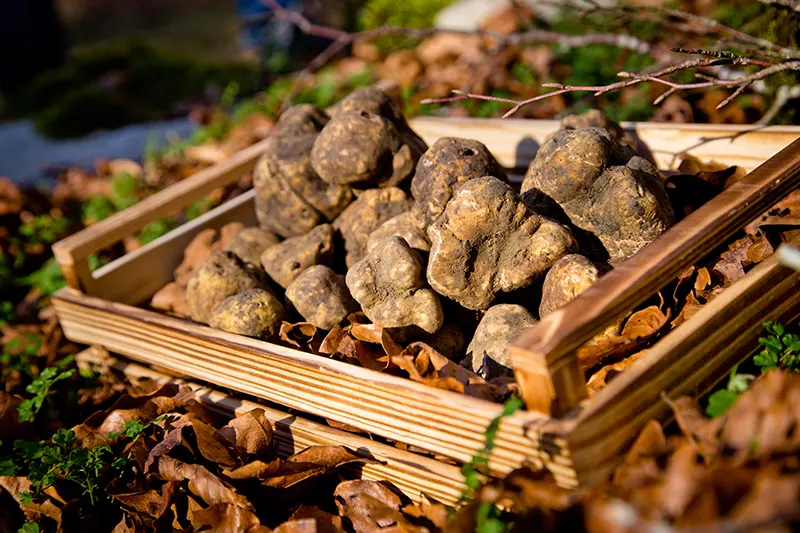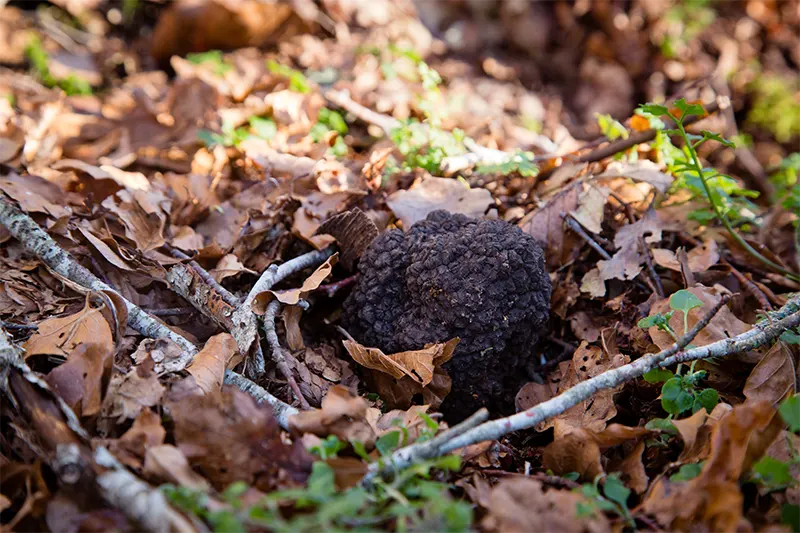THE TRUFFLE, THE KING OF THE TABLE
The truffle is a hypogeous fungus, which grows and develops underground. Unlike mushrooms, it is not a parasite, but lives in symbiosis with its host plant and grows along its roots. The truffle is a true sentinel for nature, because as soon as the best environmental conditions are lacking, it stops proliferating.
Nicknamed the king of the table for the organoleptic notes, it is able to release once combined with a dish, it is ideal in its complete and purest form.
The first rule? Never put it under running water: as it is a fungus composed of 80% water, it will absorb too much moisture. To clean it, simply scrub its surface with a soft-bristled brush to remove any earthy residue. Finally, it is carefully and lightly dried with a soft cloth.
It can be stored in the fridge for up to 5 days at a temperature of 3 to 5 degrees. Before storing it in the fridge, the truffle should be wrapped in a absorbent paper and closed in an airtight glass container. The aim is to keep it cold and avoid humidity. The paper towels covering the truffle should also be replaced twice a day.
TRUFFLE HUNTING
Truffle searching and truffle hunting in Italy’ has become a UNESCO Intangible Cultural Heritage.
An intangible cultural heritage of knowledge and practices handed down orally for centuries, centred on a profound knowledge of the natural environment and the relationship between man and animal. In order to ‘find’ a truffle, in fact, the truffle hunter must avail himself of the collaboration of a dog with a very fine nose and trained to recognise the aroma of this mushroom. When the dog sniffs out the truffle, it points it out to the hunter who, with a ‘small spade‘, extracts it with the utmost delicacy.
In order for new rootlets (which will in turn be mycorrhized) to form, it is of paramount importance that the hunter puts the removed soil back in place, so that a new fruiting body can hopefully form.
Truffle hunting is a tradition lost in the mists of time, cloaked in mystery and jealously guarded secrets.
THE SPECIES
The determination of the different truffle species is essentially based on morphological characters such as shape, size, colour, ornamentation of the peridium, appearance of the gleba, scent and flavour. These characters determine the flavour and therefore the market value of the truffle.
We therefore distinguish, based on colour, white truffles and black truffles. The white truffle is certainly the rarest and most prized type of truffle.
Its size varies greatly, depending on the time of harvesting and the influx of nourishment, and can start from a few grams and, in rare cases, far exceed a kilo in weight.
The characteristic odour reaches its maximum intensity at the moment of complete ripeness, after which, if the truffle is not harvested, the decomposition process will begin.
Colour, flavour and smell depend on the type, but also on the ‘host’ tree under which the truffle grows.




